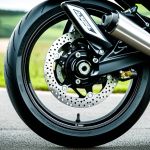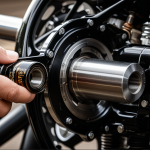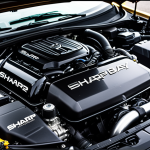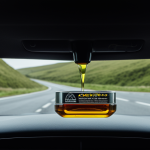Understanding Vehicle Stability and Control Systems
Vehicle stability is essential for safe and efficient driving. It refers to a vehicle’s ability to maintain control, especially during sudden maneuvers or changing road conditions. At the heart of control systems are technologies designed to prevent skidding, slipping, and loss of traction, all of which are critical for automotive safety.
Primary vehicle stability control systems include traction control, electronic stability control (ESC), and anti-lock braking systems (ABS). Traction control prevents wheels from spinning excessively when accelerating on slippery surfaces. ESC actively detects and reduces loss of traction by applying brakes to individual wheels or reducing engine power as needed. ABS stops wheels from locking during braking, enhancing steering control.
Also read : Ultimate Guide to Tire Pressure Monitoring Calibration: Key Insights for Safe Driving on UK Roads
These stability systems are increasingly sophisticated, using a network of sensors to monitor wheel speed, steering angle, and lateral acceleration. When instability is detected, the control systems intervene automatically, helping drivers maintain control and avoid accidents.
Understanding vehicle stability and its control systems is crucial because they significantly improve safety and performance. They reduce the risk of collisions caused by sudden loss of control, especially in adverse conditions like rain or ice, thereby increasing confidence behind the wheel.
Also to read : The Essential Handbook for Heat Shield Installation: Proven Methods to Keep Your Vehicle Cool and Overheating-Free
Key Components of Vehicle Stability Control
Understanding the inner workings of stability control technology reveals how modern vehicles maintain grip and balance. Central to these systems are various sensors—such as wheel speed sensors, yaw rate sensors, and steering angle sensors—that constantly monitor the vehicle’s dynamic state. These sensors feed data to an electronic control unit (ECU), which acts as the brain of the system. The ECU analyzes inputs and determines the appropriate response to correct instability.
To implement corrections, the stability system selectively controls engine torque and activates individual brakes through the vehicle’s braking system. For example, if the car begins to skid, the system may apply braking to one wheel while reducing engine power, helping to restore control. This interaction between sensors, ECU, and brake/engine management forms the core of stability control components.
When comparing OEM (factory-installed) systems to aftermarket solutions, OEM systems tend to be more integrated with other vehicle controls and provide seamless operation tailored to each vehicle model. Aftermarket systems can offer customization opportunities but may lack the depth of integration found in factory stability controls. Both aim to enhance vehicle stability, but understanding hardware and software differences is key for informed choices in automotive safety.
Customizing Control Settings for Different Driving Conditions
Adjusting custom control settings in a vehicle’s stability system allows drivers to optimize performance and safety based on specific environments. Modern vehicles offer adjustable vehicle systems that adapt to diverse scenarios like rain, ice, or dry pavement, giving drivers greater confidence and control. For example, reducing traction control sensitivity on dry roads can enhance responsiveness, while increasing it during icy conditions maximizes grip and prevents skidding.
Many manufacturers provide modes tailored for weather and terrain settings: “snow,” “off-road,” or “sport” modes adjust brake intervention, engine torque, and ESC thresholds. This adaptability ensures stability systems respond appropriately, balancing safety with driving enjoyment.
To adjust these settings, drivers typically access their vehicle’s control menu via the infotainment system or dedicated buttons. Some cars allow fine-tuning by selecting preferred levels of intervention, while others switch between preset modes, simplifying customization.
Understanding how to adapt vehicle controls for conditions like slippery or rugged surfaces is vital. It reduces accident risk and optimizes performance, whether navigating city streets during rain or tackling uneven trails. Drivers should familiarize themselves with their vehicle’s customizable features for stability control to harness safety benefits effectively.
Enhancing Performance with Advanced Stability System Tuning
Advanced performance stability tuning allows drivers to fine-tune their vehicle’s control systems beyond factory presets, balancing safety and responsiveness for spirited or competitive driving. This type of system optimization is crucial in motorsports and enthusiast driving, where precise handling and traction control adaption can improve lap times and control under varied conditions.
How do advanced settings improve vehicle control? They adjust parameters like traction systems intervention thresholds, brake distribution, and engine torque modulation. By carefully modifying these, drivers can reduce unnecessary electronic intervention during aggressive maneuvers, enabling controlled oversteer or quicker cornering while still maintaining a safety net.
For example, in track conditions, reducing ESC sensitivity slightly can allow more driving freedom but still prevent total loss of control. This tuning helps experienced drivers extract maximum performance without sacrificing underlying safety provided by the stability system.
Key considerations include:
- Using manufacturer-recommended tools and software for tuning to avoid system errors.
- Incremental changes to monitor effects on handling.
- Understanding that excessive tuning may compromise automotive safety by reducing system effectiveness.
Ultimately, advanced tuning empowers enthusiasts to customize stability controls precisely, enhancing driving enjoyment and vehicle performance while maintaining essential safety safeguards.
Safety Considerations and Best Practices
Understanding system limitations is crucial when modifying vehicle stability controls. While customization can enhance driving experience, excessive tuning may reduce the effectiveness of critical safety features. Manufacturers often warn against drastic changes that override default settings, as these systems are calibrated to balance vehicle safety and performance.
What are the risks of over-customization? Overly aggressive tuning can cause delayed intervention, increasing the chance of skidding or loss of control during emergency maneuvers. This compromises the very purpose of stability control systems, highlighting the importance of respecting manufacturer guidelines.
To maintain safety:
- Always use recommended tools and software for adjustments.
- Make small, incremental changes and test in controlled environments.
- Regularly monitor system performance and revert if instability increases.
Safe driving habits complement stability systems. Drivers should not solely rely on technology but also adapt their behaviour according to road and weather conditions. Stability controls provide an extra layer of protection but cannot eliminate all risks.
By understanding the balance between customization and safety, drivers can optimize their vehicle stability responsibly, ensuring reliable assistance without compromising control or protection.
Visual Aids: Comparing Vehicle Stability Settings
Visual comparisons can clarify how different vehicle stability systems perform under varying conditions. For example, comparison charts highlight key differences between OEM and customized stability settings, illustrating trade-offs in intervention timing, torque control, and brake application. These charts reveal how factory settings prioritize balanced automotive safety, while tuned settings might favor agility.
A visual guide to adjusting settings across weather conditions clearly shows control system responses in rain, ice, or dry pavement. Such guides depict how adjustable vehicle systems shift thresholds for traction control and ESC, helping drivers better understand how stability control technology adapts in real time.
Infographics demonstrating the impact of stability systems on crash prevention provide compelling evidence for their effectiveness. By showing statistics on accident reduction, these visuals emphasize the vital role of control systems in maintaining safety and preventing skidding or loss of control.
Together, these tools offer drivers and enthusiasts a straightforward way to analyze and appreciate the nuances of stability system performance. They enable informed decisions on whether to maintain manufacturer profiles or customize settings to suit specific driving needs, always with an eye on preserving vehicle safety and control.
Understanding Vehicle Stability and Control Systems
Vehicle stability is the foundation of safe driving, ensuring a car maintains balance and traction despite dynamic forces or environmental challenges. At its core, vehicle stability depends on control systems that continuously monitor and adjust vehicle behavior to prevent loss of control. These systems work together to maintain directional control during acceleration, braking, and cornering.
The primary stability systems explained include traction control, which limits wheel slip during acceleration; electronic stability control (ESC), which detects and corrects skidding by applying selective braking and adjusting engine power; and anti-lock braking systems (ABS), which prevent wheel lockup during heavy braking to preserve steering input.
Together, these control systems form an integrated network that constantly evaluates wheel speed, steering input, and vehicle orientation. Their rapid intervention helps drivers maintain intended paths, especially in hazardous conditions like wet or icy roads. Without these sophisticated components, maintaining vehicle stability would be heavily dependent on driver skill alone, increasing the risk of accidents.
The significance of these systems goes beyond safety; they also enhance vehicle performance by improving cornering precision and minimizing tire wear. Understanding how vehicle stability and control systems interact highlights their critical role in modern automotive safety.






